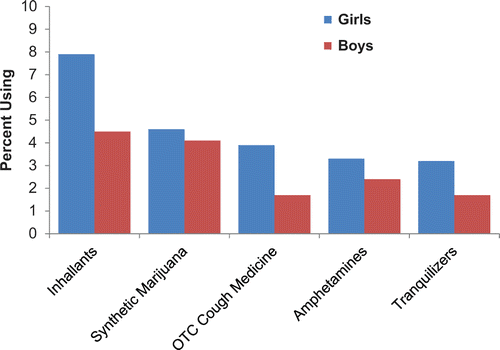
Drugs place enormous obstacles in the way of our work to raise healthy children, maintain strong families, support economic prosperity, and protect communities from crime. A recent survey shows that drug use in America remains at unacceptable levels. The costs and consequences of adolescent drug use are significant, well established, and all too familiar to social work practice. Relative to their abstaining peers, drug-using youths are more likely to experience physical and mental health issues, accidents and injuries, physical altercations, risky sexual behaviors, truancy, poorer academic performance, unintended pregnancy, and suicide. Furthermore, the earlier the youths initiate drug use, the more likely they are to experience problems with addiction as adults.
Although the rates of adolescent drug use in the last decade have remained relatively stable and are positive relative to prior decades, the transition from middle to high school continues to witness dramatic increases in substance use rates. While 8.5% of the 8th graders report past-month drug use, their 10th- and 12th-grade counterparts report rates of 19.4% and 25.5%, respectively. Furthermore, the long-standing gender gap in rates of use has continued to shrink such that girls' drug use often meets and in some cases surpasses boys' use. Not surprisingly, girls and boys share common paths to drug use. Chief among these are peer influences. Positive attitudes toward, and erroneous beliefs about, drug use are also risk factors for boys and girls alike. Yet gender differences moderate drug use. Girls' risk for drug use is related to their increased risk for low self-esteem, increased levels of stress, and higher rates of depression, relative to their male counterparts. Compared to girls with high self-esteem, young girls with low self-esteem are more likely to engage in heavy alcohol consumption as they progress through adolescence. Girls are twice as likely as boys to experience high levels of stress, a known risk factor for drug use. Around puberty, girls are also vulnerable to depressed mood, another risk factor for drug use. In fact, girls who engage even in light to moderate drug use are more likely to report depressive symptoms, whereas boys are not.

Unfortunately, girls' differential risks for drug use do not abate with the end of adolescence. As adults, drug-using women are more sensitive to the adverse short- and long-term health effects of drugs than men. Once addicted, women have more trouble than men quitting a variety of drugs, including but not limited to nicotine and alcohol. Social work interventionists can lead the field in developing and testing programs tailored expressly for adolescent girls to prevent the onset of drug use.
Computer-based technologies, monitoring solutions help social work practice to increase the reach and efficacy of preventive and targeted interventions. These interventions can provide schools, community-based agencies, health clinics, and other providers access to interventions that require little to no staff training, allowing for time and cost savings. Computer monitoring software also offers practitioners the opportunity to provide high-fidelity and tailored interventions to the populations they serve. Perhaps most compelling, computer-based interventions serve youth where they spend much of their time. Computer spy software, like Power Spy, aims to provide a way for social work practitioners to develop and tailor intervention programs.


